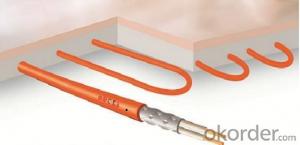Dual Solar Inverter
Dual Solar Inverter Related Searches
Best Solar Inverter For Home Home Power Inverter For Solar Best Inverter For Solar Pv Best Inverter For Solar Mini Solar Inverter For Home Solar Panel Inverter For Rv Inverter For 5kw Solar System Inverter For Solar Power Plant Inverter For Home Solar Solar Power Inverter For RvHot Searches
Steel Mesh Panels For Sale Cheap High Tea Sets For Sale High Density Fiberboard For Sale Solar Hot Water Collectors For Sale Scaffolding For Sale In Uae Scaffolding For Sale In Ireland Scaffolding For Sale In Houston Type Of Inverter For Solar Used Solar Inverter For Sale Portable Led Signs For Sale Stone Hot Water Bottles For Sale Large Led Screens For Sale 1/4 Aluminum Plate For Sale H4 Led Headlight Bulbs For Sale Air Pump For Aquarium Price Inverter Size For Solar System Solar Edge Inverter For Sale 5kw Solar Inverter For Sale Aluminum Round Stock For Sale Solar Thermal Collectors For SaleDual Solar Inverter Supplier & Manufacturer from China
Okorder.com is a professional Dual Solar Inverter supplier & manufacturer, offers integrated one-stop services including real-time quoting and online cargo tracking. We are funded by CNBM Group, a Fortune 500 enterprise and the largest Dual Solar Inverter firm in China.Hot Products
FAQ
- Yes, a solar inverter can be connected to the grid. In fact, connecting a solar inverter to the grid is a common practice in solar energy systems. The inverter is responsible for converting the direct current (DC) produced by the solar panels into alternating current (AC) that can be used by homes or businesses or fed back into the electrical grid. This allows solar energy systems to generate electricity for consumption while also contributing excess power to the grid.
- Yes, a solar inverter can be used in areas with unstable power grids. Solar inverters are designed to convert the direct current (DC) generated by solar panels into alternating current (AC) for use in homes or buildings. In areas with unstable power grids, solar inverters can help stabilize the electricity supply by synchronizing the solar power output with the grid. Additionally, some advanced solar inverters have features like grid support functions and voltage regulation, which can further enhance their performance in areas with unstable power grids.
- The role of a solar inverter in protecting the electrical grid is to ensure the safe and efficient integration of solar power into the grid. It converts the direct current (DC) produced by solar panels into alternating current (AC) that is compatible with the grid. Additionally, solar inverters monitor and regulate the flow of electricity, providing grid stability by managing voltage and frequency fluctuations. They also incorporate safety mechanisms to disconnect from the grid in case of emergencies or grid disturbances, protecting both the solar system and the overall electrical grid.
- The role of a solar inverter in a residential system is to convert the direct current (DC) electricity produced by solar panels into alternating current (AC) electricity that can be used to power household appliances and be fed back into the grid if there is excess energy. Additionally, the inverter ensures the efficiency and safety of the system by monitoring and regulating the flow of electricity.
- The role of MPPT (Maximum Power Point Tracking) in a solar inverter is to optimize the efficiency and output of the solar panel system. MPPT technology enables the inverter to constantly track and adjust the operating point of the panels, ensuring that they are operating at their maximum power point, where the highest power output is achieved. This allows the system to capture the maximum amount of energy from the sun, maximizing the overall efficiency and performance of the solar inverter.
- To calculate the power loss in a solar inverter, you would subtract the output power of the inverter from its input power. The input power can be determined by measuring the DC current and voltage at the input, while the output power can be determined by measuring the AC current and voltage at the output. The difference between the input and output power represents the power loss in the solar inverter.
- The role of a solar inverter in voltage control is to convert the direct current (DC) generated by solar panels into alternating current (AC) that is suitable for use in the electrical grid. It also ensures that the voltage output from the solar panels matches the voltage requirements of the grid, thereby maintaining a stable and consistent voltage level. This helps prevent voltage fluctuations and ensures efficient power transmission and distribution.
- During fault conditions, a solar inverter typically handles voltage regulation through various protective and control mechanisms. It may employ techniques such as voltage regulation algorithms, fast response times, and fault detection systems. These measures help the inverter to rapidly detect and respond to fault conditions by adjusting its output voltage to maintain stability within safe limits. Additionally, some inverters may also incorporate features like overvoltage protection, under-voltage protection, and anti-islanding functionality to further ensure safe and reliable operation during fault conditions.















































